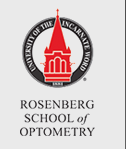Medical Subject Headings
Retinitis Pigmentosa; Vision, Low--rehabilitation
Abstract
Background: Retinitis pigmentosa is a group of hereditary retinal diseases characterized by the degeneration of rod and cone photoreceptors. It commonly results in night blindness followed by tunnel vision and central vision reduction. The classic triad of clinical signs includes pigmented bone spicules, waxy disc pallor, and arterial attenuation. Unilateral retinitis pigmentosa is rare and can be supported with ancillary testing including genetic and laboratory studies to rule out differential diagnoses.
Case Report: A 68-year-old Hispanic female was referred to the low vision rehabilitation clinic due to progressive vision loss in the left eye (OS) that began 15 years ago. The vision was normal in the right eye (OD). Additionally, she suffered from hearing loss in the right ear since age 3. Examination revealed abnormal visual acuity, visual field, fundus appearance, optical coherence tomography, and electrodiagnostic test results in the OS only. Laboratory studies ruled out various infectious, autoimmune, traumatic, and toxic drug etiologies. Genetic testing revealed novel mutations in genes associated with retinitis pigmentosa.
Conclusion: The genetic testing results along with the clinical examination and electrodiagnostic evaluation supports the diagnosis of unilateral retinitis pigmentosa.
Recommended Citation
Ho M, Schmiedecke-Barbieri S, Sanchez-Diaz PC, Majcher C. Novel genetic mutations in genes AGBL5 and TULP1 for presumed unilateral retinitis pigmentosa managed with low vision rehabilitation: A case report and review. Optometric Clinical Practice. 2021; 3(1):39. https://doi.org/10.37685/uiwlibraries.2575-7717.2.2.1010
Creative Commons License

This work is licensed under a Creative Commons Attribution-NonCommercial 4.0 International License
Digital Object Identifier (DOI)
10.37685/uiwlibraries.2575-7717.2.2.1010

